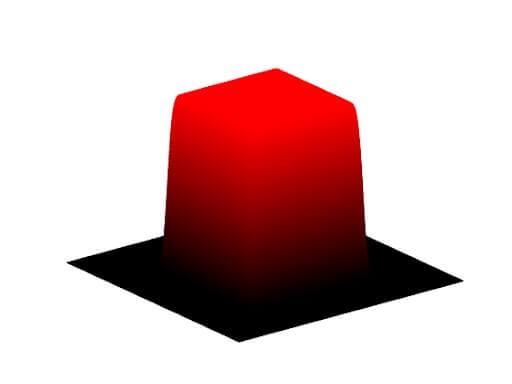Lifestyle
Top Hat Distribution

Laser systems are now being deployed on a great variety of industrial applications and the number is expected to continue increasing in parallel with the current advancements of photonic technologies. At the same time, the efficiency of laser systems, for any application, can be further enhanced if the emitted beam is more concentrated or is better controlled. Although for the layman a laser system is almost synonymous with tight light control, the truth is that when a laser beam is focused, the irradiance pattern is not exactly well confined to an area when we look closely at it. The emitted beam from most lasers is said to have a Gaussian profile which has as a main feature a smooth peak with slowly decaying edges. Thus, when the beam is focused with an optical lens, the irradiance spot also exhibits this Gaussian pattern and, as a result of these soft edges, will cause light to extend beyond the desired area of operation of the laser spot.
A more convenient type of radiance pattern for the focal spot of a laser system is what is referred to as a Top Hat Distribution. A Top Hat beam is characterised by an area of constant radiance that is well bounded by some hard edges. It resembles a plateau on a mountain top or the hat used by magicians. In any case, with the Top Hat beam distribution, there will be almost no light creeping outside the desired target area and any problems arising from a non-uniformity during an exposure time will be completely eliminated.
Also, Check – Fingerboard Tricks: What You Want To Know
The difficulty resides in the fact that a Top Hat distribution does not occur naturally in most laser systems. Those lasers that do not emit on a single Gaussian mode, instead emit a more complex superposition of higher order modes that neither exhibit good uniformity nor hard edges. There are some high-power laser manufacturers that claim that their laser emits a Top Hat Distribution but on a closer inspection that seems more like an approximation. Further, a top hat laser beam profile needs to be relayed from laser output to the work surface, requiring a long and hard to align imaging system.
Thus, the best method to obtain a Top Hat distribution from a Gaussian beam is to use an extra beam shaper element in the optical system. If the laser system emits a single Gaussian mode, the best choice is to use a diffractive optical element. If the laser system is multimode, a more suitable alternative would be to use a broadband diffuser or a microlens array.

-

 Business3 years ago
Business3 years agoHow to Do Long-Distance Moves with Children
-

 Travel2 years ago
Travel2 years agoQuick Guide: Moving To Santa Rosa?
-

 Real Estate3 years ago
Real Estate3 years agoWhy Dubai Festival City is a Great Neighbourhood for Young Learners
-

 Business3 years ago
Business3 years agoIs Guest Posting a Good Inbound Marketing Strategy?
-

 Business1 year ago
Business1 year agoThe Ultimate Guide To Thriving In Your Printing Franchise
-

 Business1 year ago
Business1 year agoExploring The Benefits And Challenges Of Restaurant Franchising
-

 Tech3 years ago
Tech3 years agoCyber Table That Will Change Your Life
-

 Lifestyle1 year ago
Lifestyle1 year agoDallas’ Hidden Gems: 6 Must-Try Restaurants Off The Beaten Path!









Recent Comments